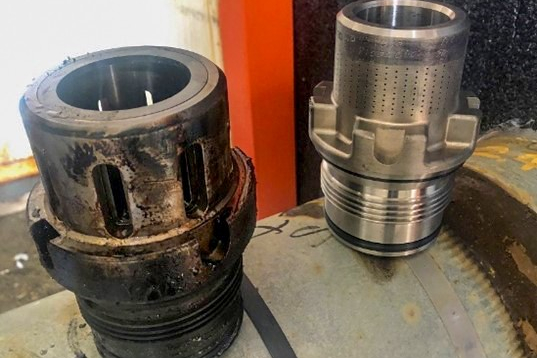Spare parts are sometimes hard to come by on Alaska’s North Slope. Take burner plugs, for instance. These consumable parts, found within ConocoPhillips’ original gas turbines at Kuparuk (a 40-year-old field), aren’t manufactured anymore.
So, when one of these components wears out — they eventually succumb to what’s known as heat erosion — it’s a challenge to replace them. In such remote locations, lead times for certain equipment can stretch from 30 to 60 weeks.
To remedy this supply chain issue, Alaska business unit teams — in collaboration with ConocoPhillips’ Global Production experts — have been testing 3D printed burner plugs in its Ruston gas turbines at Kuparuk.
The plugs are printed using Inconel 718, a high-strength superalloy with a nickel-chrome base material resistant to high pressure and extreme temperatures. In the case of these outdated burner plugs, which are no longer covered by intellectual property laws, it’s possible to go from a set of drawings to a printed object in about a week and then have it shipped to the field location.
In another Alaska pilot project, ConocoPhillips teams have partnered with an original equipment manufacturer (OEM) and additive manufacturers to 3D print choke cage valves, which are flow control devices used in water injection wells.
A conventional choke cage valve, left, and a 3D printed choke cage valve with a modified design. These valves are used as flow control devices on water injection wellheads.
In this instance, the Alaska team identified numerous choke valves obsoleted by the OEM. The solution: retrofit the existing valve bodies with 3D printed valve cages made of Inconel 718.
These 3D printing trials, he said, exemplify the Alaska business unit’s continual search for innovative, cost-effective ways to maintain and optimize its operations.
Courtesy of ConocoPhillips.


